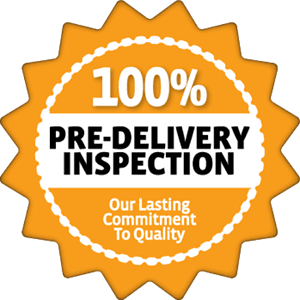Tips for Towing a Trailer
June 25, 2019

Remember the first time you merged onto the highway? You confidently pressed the accelerator to reach more than 60mph, casually merged between two semitrucks, kept the recommended 2-second distance behind the vehicles in front of you, and were prepared to slam on your brakes due to construction a half-mile up the road. That all sounds right… right? Okay, probably not.
When it comes time to tow a trailer, the typical stresses of the road are exacerbated if you’re unprepared. So, we have a few tips-let’s call it Towing 101-to help you overcome any fears.
- Build confidence
- Know All the Angles
Steady does it: When in reverse, turning the steering wheel harshly to the left will force the RV to the right. But, if you use a softer angle and go slow, turning the steering wheel to the left will allow the RV to make a similar curve.
Utilize your mirrors: This can help you avoid sending the front of the RV into the back of your truck.
Be aware of your surroundings: If it’s safe to do so, get out and determine how far you are from other vehicles, trees, active roads, and other people.
Ask for help: Most people are more than willing to help you guide your RV to its destination. They can help you get as close or as far as you need to be, navigate narrow spaces, and avoid any potential damage.
- Limit Distractions
Trust us, we love to take our pets along as much as the next RVer, but we know how excitable they can get with all the new smells, sights, and energy that comes with visiting a new location. So, while you’re driving, make sure your pets either can’t access your lap, are crated, or are secured somewhere they won’t be spotting squirrels every five seconds.
Smartphones: Not only is it against the law, using your cell phone while you navigate is very dangerous for you, your passengers, and for everyone else along the way. We recommend using the GPS system in your vehicle (if it has one) or ask a co-pilot to do any digital tasks while you keep your eyes on the road.
- What’s the forecast?
Standing water: Water on the road can make braking more difficult and increase your chance of hydroplaning. So, when it’s raining out, you’ll want to keep your speed down, stick to the right lane, and plan out any areas to park at while you wait out the storm.
- Instructions Are Your Friend
Dutchmen owners: For an overview of common RV systems and terminology, plus links to some of the component manufacturer sites, you can head here to download your owner’s manual.
- Check Your Destinations
This probably seems like a no-brainer, but you’ll want to know exactly how much room your rig (plus your towing vehicle) will take up. That’s length, width, and height. Some destinations only allow certain sized truck and trailer combinations to visit. Doing a site recon through the website, checking Google Earth, or even simply calling the facility can help reduce some of that pre-trip anxiety.
Now for some general advice, because we’re nice like that.
Consider a Tag-Along
Who doesn’t love a good co-pilot? Not only are they great for handing over warm drive-thru food, they’re better with directions (we hope), help pass the time on desolate roadways, and can be a lifesaver when backing up the trailer or navigating tight spaces. Plus, we like to think traveling is better when it’s shared with someone else.
Plan Ahead
Some campgrounds reach booking capacity months (sometimes a year) in advance, so if you want to make that great big trip to Yellowstone or Arcadia, we suggest you start booking your trip ASAP.
When in Doubt
You can always ask the Dutchmen team for help when it comes to your RV travels.
For more RV advice, head to our Facebook page. And, you can always follow us on Instagram for updates about our family of Dutchmen RV owners.
Share this article
Newsletter Sign-up



